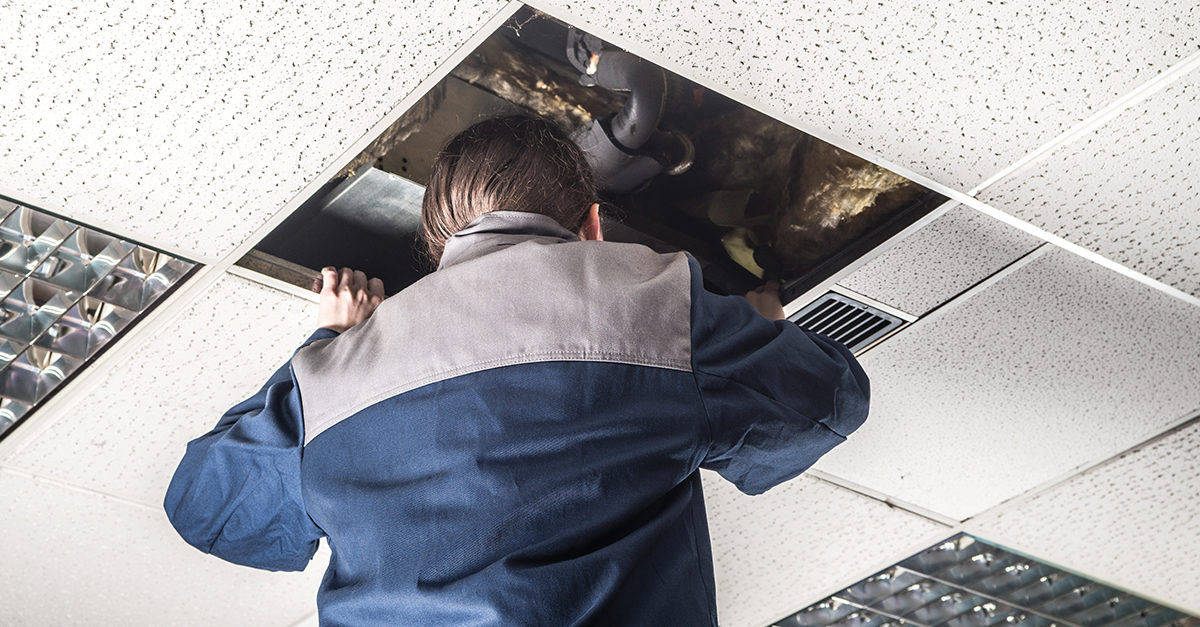A building’s roof is its first line of defense against natural hazards such as wind, rain, hail, ice, snow, and extreme temperatures. Consequently, it also is one of the most vulnerable parts of a building.
Each day, a roof has exposure to weather and other elements that may contribute to decay and deterioration, increasing the risk of damage to the roof itself and the contents below it. Protecting your facility’s roof from weather damage will extend not only the roof’s longevity, but also the durability of the building.
The best way to strengthen a roof’s weather resistance is to follow a regular care and preventative maintenance plan. While routine roof maintenance may be an added expense to your budget, it will save you money in the long run compared to the cost of roof replacement.
Here are three tips to follow when creating a plan to secure the longevity of your roof:
Keep Your Roof Dry
One of the leading causes of roof failure is water—just a few inches of water from improper drainage can cause up to thousands of dollars worth of damage. Even after a light rain, an improperly maintained roof may collect water that could result in severe structural damage.
Following every rain, facility managers should:
- Conduct a visual inspection of the roof to look for accumulating or puddling water.
- Pay significant attention to the roof’s drainage system to guarantee there’s no water backup.
- Inspect the downspouts to ensure there’s a good discharge through the gutters, and remove any debris that could cause a backup. Clogged gutters or fallen debris, such as leaves, branches, or overhanging tree limbs, can obstruct the flow of water on the roof.
If you do notice signs of puddling, look at the pitch and slope of the roof—is the water being routed in the correct direction for it to dissipate? If not, the roof’s pitch or slope may require correction. If your building has a flat roof, remove the water using a soft bristle broom or a push squeegee to prevent long-term puddling. Every flat roof is going to have a small amount of puddling; the goal is to minimize it and to prevent water from accumulating for more than 24 hours.
Additionally, look for areas where natural leaks could occur, such as pitch pans, air conditioning units, or any other spots where the roof has been penetrated to secure equipment. Properly seal and inspect these areas on a regular basis to prevent water from seeping through or transferring into the structure of the building. Conduct routine inspections to the interior of your building as well, looking at ceiling tiles and drywall for indications of staining or watermarks.
Prepare for Seasonal Changes
Your building’s roof is witness to the full impact of every season—the good, the bad, and the destructive. Putting a maintenance plan in place ahead of each season will ensure your roof is prepared to weather any storm.
Facility managers or building owners in the Midwest should set up inspections and maintenance programs in the fall, before the first freeze, to make sure the roof is free of debris. In the spring and summer, dirt that builds up on a roof’s surface, combined with moisture from seasonal showers and seeds carried by the wind, can quickly turn into an ecology system—complete with weeds taking root in your roof, causing cracks and other damage.
In regions that are subject to winter weather, such as snow and ice, preventative maintenance to your roof can drastically improve its longevity. Not only do ice and snow pose a water hazard to a roof, but the buildup of these elements can equate to thousands of pounds in weight, potentially resulting in structural damage to your building. Schedule snow removal services for your roof, just as you would for your facility’s parking lot and entryways, to safeguard it from winter hazards.
Falling icicles, which can puncture your roof, are a commonly overlooked winter hazard. If your building has any obstructions that hang over the roof, such as tree limbs or power lines, be sure to check them for icicle accumulation.
Budget for Prevention
Would you purchase a warranty for your car but not change the oil for five years? Of course not—your car is a major investment which requires proper maintenance to continue running smoothly and not void the warranty. The same can be said for your building’s roof. Too often, facility managers put off maintaining or even inspecting their facility’s roof before it’s too late, leaving them with no option except costly repairs.
Roof upkeep is an ongoing job for a building management team. A minor budget allocation for preventative care can potentially save you millions of dollars in the long run—don’t hesitate to make it a priority.



